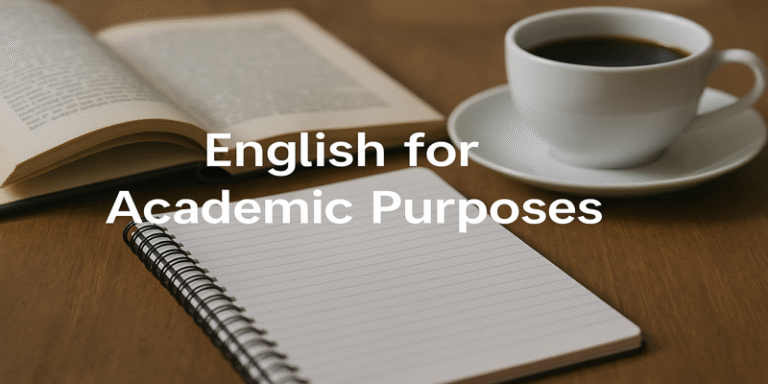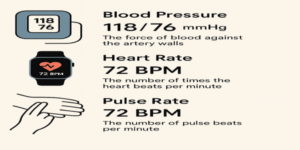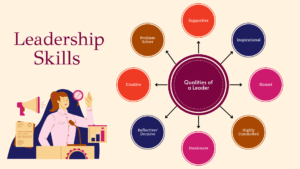English for Academic Purposes (EAP) has developed as a significant field within applied linguistics and English language teaching. It is primarily concerned with preparing learners to use English effectively in academic contexts such as universities, research environments, and professional scholarly communication. EAP differs from General English in that it emphasises academic discourse, disciplinary-specific communication, and the development of critical literacy skills required for higher education. As globalisation and internationalisation of education have increased, EAP has become essential for students navigating English-medium institutions worldwide (Hyland, 2006).
This article explores the concepts, practices, and challenges of EAP, highlighting key pedagogical frameworks, contemporary debates, and practical examples, supported by scholarly literature and empirical research.
1.0 Defining English for Academic Purposes
EAP is defined as the branch of English for Specific Purposes (ESP) that focuses on the language, skills, and practices necessary for academic study and scholarly communication (Jordan, 1997). While ESP caters to professional or vocational fields (e.g., English for Medical Purposes, English for Business), EAP specifically targets learners engaged in academic study. According to Hyland and Hamp-Lyons (2002), EAP encompasses not just language structures but also the academic literacies students require to participate effectively in higher education.
A key feature of EAP is its needs-based orientation. Unlike general English courses, EAP begins with a detailed needs analysis to identify the specific linguistic and cognitive requirements of learners within their disciplines (Dudley-Evans & St John, 1998). For example, science students may need to focus on reading research articles and writing laboratory reports, whereas humanities students may require training in essay writing and critical analysis.
2.0 Pedagogical Approaches in EAP
2.1 Skills-based Approach
The skills-based approach emphasises developing the four core skills—reading, writing, listening, and speaking—for academic contexts. This includes critical reading, note-taking, academic writing, and seminar participation (Minarsih, Tyas & Herlina, 2025).
2.2 Genre-based Approach
The genre approach, heavily influenced by systemic functional linguistics, examines the textual and rhetorical structures of academic discourse. Hyland (2004) argues that genre pedagogy empowers learners by exposing them to authentic models of academic texts, such as dissertations, journal articles, and conference abstracts.
2.3 Corpus-based Approach
Corpus linguistics has enabled teachers to use large databases of academic texts to analyse recurrent patterns in academic writing. For instance, research shows that signalling nouns, hedging, and nominalisation are key features of dissertation writing (Yang, 2025).
2.4 Online and Blended Learning
The rise of digital education has transformed EAP delivery. Bao (2025) highlights that EAP MOOCs and online writing programmes have expanded access, though challenges remain in maintaining engagement and providing individualised feedback.
3.0 Critical Literacy and EAP
EAP is not limited to teaching grammar or vocabulary but emphasises critical literacy—the ability to question sources, evaluate arguments, and construct academic knowledge (Nguyen & Trinh, 2025). Critical reading strategies are central to EAP courses, equipping students to navigate dense, discipline-specific materials. For example, a student in engineering must critically interpret research data, while a literature student may analyse theoretical frameworks.
Wong (2025) provides a critical EAP perspective, noting that EAP is inherently linked to issues of identity, power, and resistance. By teaching academic English, institutions may implicitly promote certain cultural or ideological values, raising concerns about linguistic imperialism. Thus, educators must balance language training with respect for students’ linguistic and cultural backgrounds.
4.0 The Role of EAP Educators
EAP practitioners occupy a unique position within universities. They are often seen as support staff rather than disciplinary experts, which may undermine their professional identity. Taylorson, Mavor and Miles (2025) argue that applying a psychological lens reveals the identity challenges faced by EAP educators, who negotiate between language pedagogy and disciplinary authority.
Professional development and collaboration with subject specialists can strengthen EAP provision. For example, joint modules between EAP lecturers and faculty members in engineering or business can provide students with both linguistic scaffolding and disciplinary knowledge.
5.0 EAP Across Disciplines
A major challenge in EAP is addressing disciplinary variation. Research shows that science textbooks employ different grammatical and lexical structures compared to humanities materials (Yang, Lan & Huang, 2025). Similarly, English for Medical Purposes requires specialised vocabulary, diagnostic communication skills, and familiarity with medical discourse (Aarvidurai, Anandhan & Thiyagarajan, 2025).
Therefore, effective EAP must be discipline-sensitive, recognising that academic communication is not homogeneous but shaped by the epistemological norms of different fields.
6.0 Technological Integration in EAP
The integration of digital tools has reshaped EAP teaching. Leva et al. (2025) note that translation students increasingly rely on university-provided tools for academic tasks. Similarly, Shalhoub and Kunt (2025) highlight that online distance learning (ODL) during COVID-19 accelerated the adoption of platforms such as Moodle and Zoom for EAP instruction.
While these tools increase accessibility, they also pose challenges in terms of digital literacy and the risk of over-reliance on AI-based translation or writing tools, which may undermine the development of independent academic skills.
7.0 Challenges in EAP
7.1 Cultural Diversity – Students from varied linguistic and cultural backgrounds face different barriers to academic integration.
7.2 Assessment – Measuring EAP outcomes remains complex. Traditional exams may not capture skills such as critical thinking or collaborative learning.
7.3 AI and Academic Integrity – With tools like ChatGPT being widely used, concerns have arisen regarding plagiarism and authenticity of student work (Prykhodchenko et al., 2025).
7.4 Resource Inequality – Access to high-quality EAP instruction is uneven globally, disadvantaging students in less-resourced institutions.
EAP plays a vital role in supporting students’ academic success by equipping them with the necessary linguistic, cognitive, and critical skills to thrive in higher education. Its needs-based, discipline-sensitive, and literacy-oriented approaches ensure that it remains dynamic and adaptable to global academic trends. However, challenges such as professional recognition, digital integration, and academic integrity require continuous attention.
Ultimately, EAP is not merely about mastering English; it is about gaining access to academic communities of practice, shaping professional identities, and engaging critically with knowledge production in a globalised world.
References
Aarvidurai, E., Anandhan, H., & Thiyagarajan, T.K. (2025). Education as panacea: Paradigm shift in assessing the English for medical purposes needs and learning preferences of allied health science students. Humanities and Social Sciences Letters, 13(3), 998–1013.
Bao, P. (2025). Designing for Academic Literacy Online: A Meta-Analysis of EAP MOOCs and Writing Programs Through Theoretical Lenses and Evidence-Based Frameworks. SSRN.
Dudley-Evans, T., & St John, M. (1998). Developments in English for Specific Purposes. Cambridge University Press.
Hyland, K. (2004). Genre and Second Language Writing. University of Michigan Press.
Hyland, K., & Hamp-Lyons, L. (2002). EAP: Issues and directions. Journal of English for Academic Purposes, 1(1), 1–12.
Jordan, R. (1997). English for Academic Purposes: A Guide and Resource Book for Teachers. Cambridge University Press.
Minarsih, Y., Tyas, D.M., & Herlina, N. (2025). Menghadapi stres akademik: kontribusi dukungan teman sebaya dan konsep diri pada siswa. Jurnal Pengabdian Masyarakat, 14(2), 23–34.
Nguyen, T.B.T., & Trinh, T.H. (2025). A proposed instrument to investigate university students’ critical reading strategy use in English reading comprehension. VNU Journal of Foreign Studies, 41(1), 55–71.
Prykhodchenko, S.D., Prykhodchenko, O.Y., & Shevtsova, O.S. (2025). Software detection of Ukrainian-language texts generated by AI: methods, estimations, challenges. ResearchGate.
Shalhoub, M.M., & Kunt, N. (2025). ODL Experience in the Light of COVID-19 Pandemic in Higher Education in Palestine: EFL Instructors’ and Learners’ Perspectives. ResearchGate.
Taylorson, J., Mavor, K., & Miles, P. (2025). Applying a psychological lens to educators’ professional identity: The case of English for Academic Purposes educators. Review of Education, 13(2), 201–218.
Wong, K.H. (2025). A critical EAP perspective on “Glory to Hong Kong”: Language, identity, and resistance. ELT Educational Journal, 19(1), 44–59.
Yang, J. (2025). Exploring cohesive functions of signalling nouns in dissertation writing. Journal of English for Academic Purposes, 58, 101–115.









